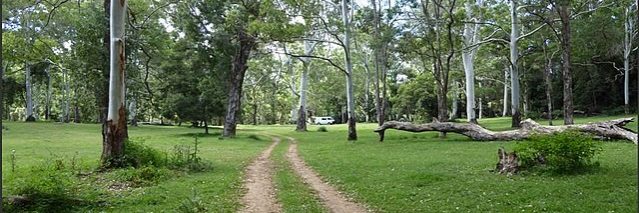Kroombit Tops National Park is the only habitat of the critically endangered Kroombit tinker frog. Source: Len Lowry, Wikimedia Commons
A captive breeding program in Queensland may have successfully brought the critically endangered Kroombit tinker frog back from near extinction.
The habitat of the Kroombit tinker frog is limited to just a few narrow rainforest gullies in Kroombit Tops National Park, southwest of Gladstone, central Queensland.
There is currently less than 150 of the frogs left in the wild.
Queensland Parks and Wildlife Services (QPWS) launched a breeding program with Currumbin Wildlife Sanctuary back in 2017 and has now released the first frogs captively bred.
QPWS senior conservation officer Harry Hines said: “It’s highly significant … they’re really on the cusp of going extinct.”
Mr Hines said that 24 captively bred Kroombit tinker frogs have now been released in Kroombit Tops National Park.
“We’ve been monitoring those animals … we got some good evidence that the frogs have visited those introduction sites at least several weeks after they were reintroduced there,” Mr Hines said.
“So that’s a very major step forward for us.”
Michael Vella, an amphibian conservation specialist from Currumbin Wildlife Sanctuary, said he is committed to saving the Kroombit tinker frog from extinction.
“A lot of people don’t know that the Kroombit tinker frog exists but we will all probably know about it, if it became extinct,” Mr Vella said.
“We’d know about it for the wrong reason.”
Mr Vella also said that, while the release of the captively bred frogs was a significant step forward, he was hesitant to say too quickly whether it was a success.
“It was only our first release so it’s still very early in the lifespan of the project,” Mr Vella said.
“Captive breeding isn’t necessarily a silver bullet that’s going to solve all the problems because we can release frogs, but we have to make sure that they’re able to survive in that changing environment.”
Mr Hines said there are many threats to the Kroombit tinker frog, including drought, floods, disease, and feral pigs.
“There’s lots of challenges, it became obvious early on that we needed to develop captive breeding as a potential conservation tool for this species,” Mr Hines said.
The Kroombit tinker frog is difficult to breed due to its timid, secretive, and nocturnal nature. It can only be located by its distinctive ‘tink’ sounding call.
Mr Vella said the number of the frogs in the wild is being monitored by the number of calls recorded.





